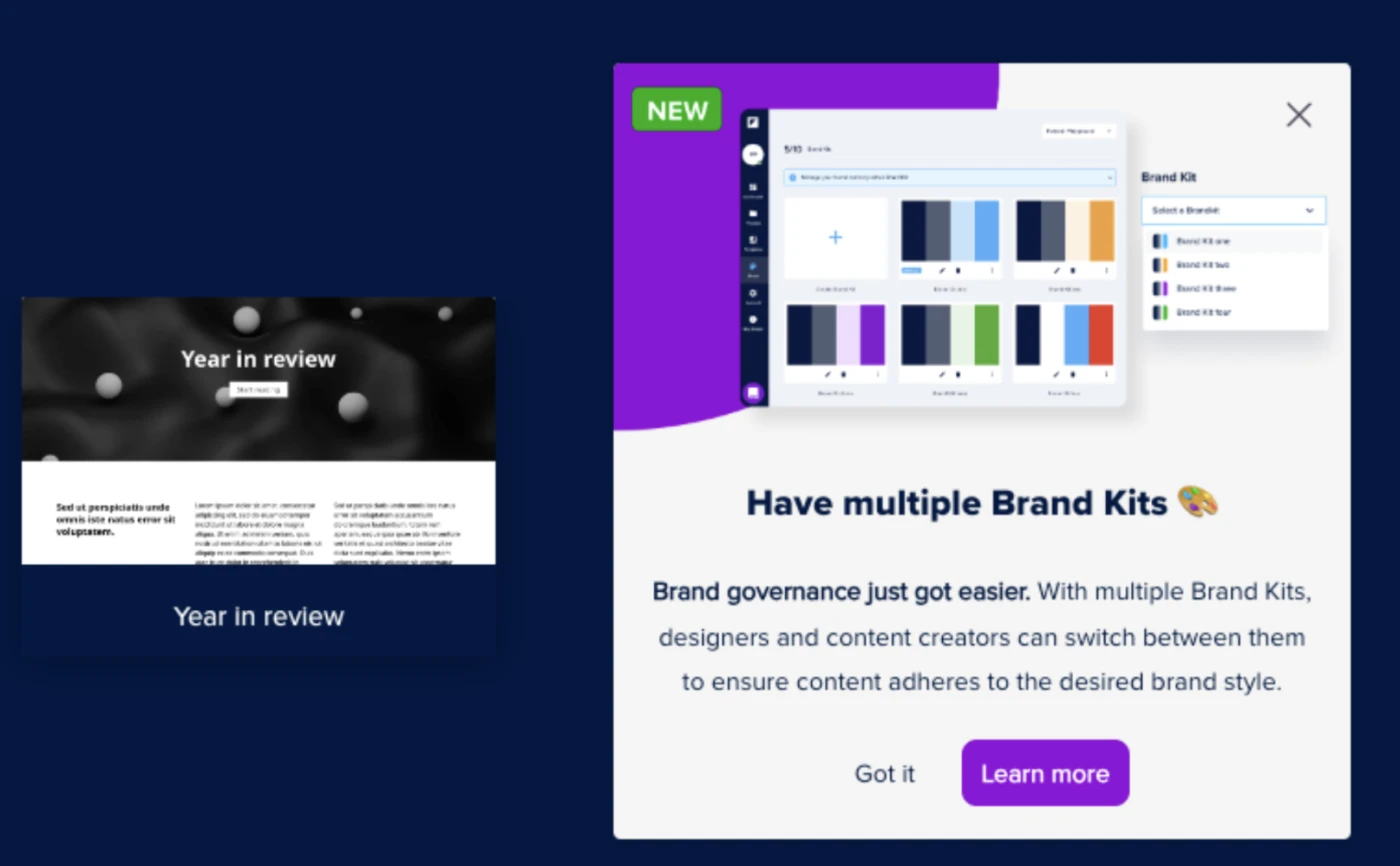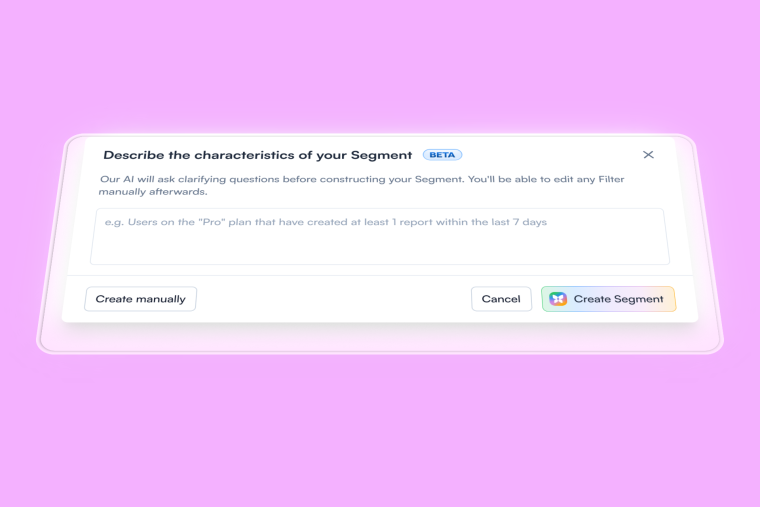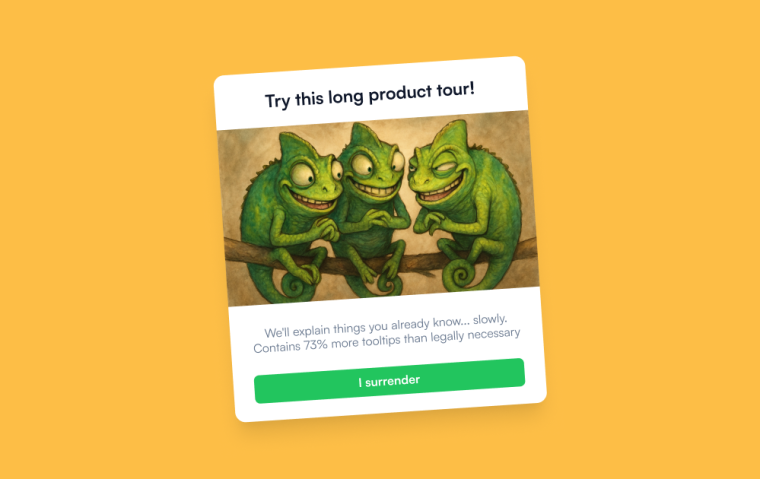In B2B SaaS, the clock starts ticking the moment a new user signs up. Every day between sign-up and that first "aha!" moment is a risk: churn, lost revenue, missed opportunity. Yet for many teams, reducing time to value (TTV) feels like trying to catch fog.
The average SaaS TTV typically ranges from three to six months. That might work if your users have the patience of a monk, but in a world where product-led growth is the norm, it is simply too slow.
The good news is that TTV is not a matter of fate. It is a design challenge, and design challenges have solutions. This guide is your blueprint for helping users hit success faster, building stickier onboarding, and turning your product into its own growth engine. Whether you are a PM, PMM, or growth leader, you will find practical frameworks, examples, and no-fluff strategies to get users from "sign up" to "wow, this works" in record time.
The TL;DR of Reducing TTV in Onboarding
-
Time to Value (TTV) is the clock between a user signing up and hitting their first “aha!” moment — and shortening it boosts retention, activation, and revenue.
-
Most SaaS teams take 3–6 months to deliver value, but smart onboarding design can cut that time dramatically.
-
The biggest TTV blockers are complex setup, unclear value, lack of personalization, overwhelm, missing guidance, and hidden dependencies.
-
Tools like Chameleon help reduce friction through interactive tours, tailored onboarding, and in-app checklists that guide users to success faster.
-
Follow the ACCELERATE framework to systematically reduce TTV and make speed to value your new growth superpower.
Understanding Time to Value in SaaS Onboarding
Time to value (TTV) is not just another SaaS acronym. It is the north star of great onboarding. It measures how long it takes a new user to experience that magical moment when they realize your product actually makes their life better.
That moment is not "account created" or "integration connected." It is the first meaningful outcome, the thing they came for in the first place.
The reality check:
Most SaaS teams take three to six months to get users there. That is an eternity. The longer it takes, the higher the odds they drift off before they see the good stuff. The gap between setup and value is where most onboarding journeys lose steam and where your biggest opportunities hide.
Setup vs. Value:
Setup is the homework: logins, integrations, permissions. Value is the "ohhh, I get it" moment, launching a campaign, generating insights, or closing a ticket. The shorter the distance between those two, the stronger your retention curve.
Your mission is simple: do not just get users through setup, get them to success.
Why Reducing Time to Value Matters
Cutting TTV does more than make users happy. It directly boosts the metrics that keep your business healthy.
The data drop:
Companies that cut their TTV in half often see a 25 percent higher retention rate. That means more renewals, more expansions, and more people telling their friends you are fantastic.
The cost of delay:
Every extra day before value realization is a day users can wander off. Slow TTV results in lower NPS, increased support tickets, and fewer upgrades.
For PMs, TTV is your canary in the coal mine. If it is long, something is off in your onboarding or product clarity. If it is short, you have built something intuitive and addictive, and that is your edge.
Measuring Your Current Time to Value
You cannot fix what you cannot see. Start with these core metrics:
Time to First Value (TTV)
Formula: Date of first value event minus date of sign-up
Define what "value" actually means. It is not universal; it is your product's mic-drop moment.User Activation Rate
Formula: (activated users divided by total new users) × 100
This is your leading indicator of success.Onboarding Completion Rate
Formula: (users finishing onboarding divided by total new users) × 100
A low number here means users are getting lost.Churn in the First 30 Days
Early churn is TTV's shadow. If users do not see value quickly, they disappear.Product Adoption Rate
Tracks how many users engage with your hero features.Support Ticket Volume During Onboarding
Too many "how do I" tickets equals friction.Time to First Key Action
Track how long it takes users to complete the action that unlocks value.
Benchmarks:
Small SaaS teams: around 4 months.
Mid-market: around 3 months.
Enterprise: approximately 6 months (thanks to red tape).
Focus on leading indicators such as activation and completion. They tell you what is coming next, not what already happened.
Platforms like Chameleon give you real-time visibility into all of this, so you can see where users stumble and fix it before it costs you another renewal.
Six Sneaky Friction Points Slowing Down TTV
Every onboarding flow has its villains. Here are six that love to steal your users' time and how to stop them:
Complex Setup
Too many hoops to jump through. Keep it light. Use progressive disclosure, break tasks into small steps, and celebrate even the smallest wins.Unclear Value
If users do not understand why they are doing something, they will stop. Connect every action to a meaningful outcome.Zero Personalization
One-size-fits-all onboarding fits no one. Segment by persona or use case so users see what matters most to them.Overwhelming First Impression
Do not show off everything on day one. Guide users through a clear, minimal "first success" path.No Guidance When It Matters Most
When users hit a wall, they bail. Add tooltips, checklists, and contextual help that keeps them moving forward.Hidden Dependencies
Surprise requirements are silent killers. Flag integrations, teammates, or setup steps upfront.
A simple friction audit can expose your biggest time sinks. Then fix the ones that matter most. Tools like Chameleon make it easy to spot drop-offs and smooth them out.
How Chameleon Helps Teams Speed Up TTV
Reducing TTV is about clarity, context, and timing. That is exactly what Chameleon was built for.
Guided Onboarding Flows
Interactive tours that meet users where they are. Keep them short, ideally 3 to 4 steps, and action-focused. Click-triggered tours perform best because they move in sync with the user.Segmentation and Smart Targeting
Different personas, different paths. With Chameleon, you can deliver custom tours, checklists, and messages based on role, plan, or behavior. A data analyst and a growth marketer should not see the same thing.In-App Checklists, Banners, and Tooltips
Gentle nudges are better than interruptions. Embed micro-guidance right into the flow. A simple checklist like "Upload data, Invite a teammate, Run first report" can shorten TTV dramatically.
The ACCELERATE Framework for Reducing TTV
A nine-step playbook for turning onboarding into a growth engine.
A – Assess: Map your journey and find the slow spots.
C – Clarify: Define your "first value" moment.
C – Customize: Tailor onboarding for each persona.
E – Educate: Teach by doing, not by explaining.
L – Leverage Data: Let analytics guide your decisions.
E – Experiment: Test, tweak, repeat.
R – Remove Friction: Smooth the road to value.
A – Align Teams: Make onboarding everyone's job.
T – Track and Evolve: Keep improving. Onboarding never sleeps.
Quick snapshot:
20 percent faster TTV in 60 days
15 percent higher activation
10 percent fewer support tickets
Chameleon supports every step with personalized flows, analytics, and experiments, eliminating the need for engineering help. Try it now for free.
Advanced Tactics to Shave Even More Time
Once you have nailed the basics, take it further.
Personalized Flows: Use user data to trigger context-specific experiences.
Progressive Disclosure: Reveal complexity only when users are ready.
Milestone Moments: Celebrate progress. Confetti is underrated.
A/B Testing Everything: Even micro-copy can move the needle.
Segmentation by Role or Use Case: Enterprise admins and self-serve users need very different levels of guidance.
Conditional flows in Chameleon make it easy to build and test these personalized experiences at scale.
Your 30-60-90 Day Plan to a Shorter TTV
Days 1 to 30:
Audit onboarding, map friction, define "first value," align teams.
Days 31 to 60:
Implement quick wins such as checklists, tours, and personalization. Start tracking activation.
Days 61 to 90:
Run experiments, measure results, and celebrate progress.
Make onboarding optimization a shared success, not a product-only project. Share wins early and often.
Wrapping Up: Make Speed to Value Your Superpower
Reducing TTV is not just a metric; it's a key indicator of success. The best onboarding does not feel like onboarding at all; it feels like momentum. It is users thinking, "Oh, this is easy," not "Where is the help doc?"
When users reach value faster, you earn not only retention but also loyalty. You earn loyalty.
With tools like Chameleon, you can personalize every journey, test what works, and deliver those magical "aha!" moments faster than ever.
Because in SaaS, speed to value is not just a KPI. It is your competitive edge.
-
The fastest way is to identify and remove onboarding friction points, implement guided product tours, and personalize onboarding flows based on user roles or use cases. Leveraging analytics to monitor user progress and iterating on onboarding steps can accelerate value realization significantly.
-
Tracking metrics such as user activation rate, onboarding completion rate, and time to first key action helps pinpoint where users encounter delays. Analyzing these data points enables teams to optimize onboarding flows, prioritize improvements, and measure the impact of changes on time to value.
-
Segmentation allows SaaS teams to tailor onboarding experiences to different user personas, industries, or company sizes. By delivering relevant guidance and resources, segmentation ensures users reach meaningful outcomes faster, reducing overall time to value and increasing product adoption rates.
-
Interactive product tours, in-app checklists, contextual tooltips, and analytics dashboards are among the most effective tools. Platforms that combine these features, such as Chameleon, enable teams to guide users efficiently, monitor progress, and quickly address onboarding bottlenecks.
-
Regular reviews are essential—ideally every quarter or after significant product updates. Continuous monitoring of onboarding metrics and user feedback ensures the process evolves with user needs, helping maintain a competitive time to value and supporting long-term retention.








